The Art of Blending Photos and Stories to Create a Compelling Family History Book
February 24, 2025
Family history books serve as treasured time capsules, preserving the essence of generations past for future descendants.
While text alone can narrate a family’s journey, the inclusion of photographs adds a rich, visual layer to the story. Combining photos with written narratives creates a compelling, multi-dimensional portrayal of family heritage that evokes a sense of connection and belonging.
The Power of Photos in Storytelling
Photographs are windows to the past, capturing moments that words often struggle to convey. A faded portrait, a group shot at a family reunion, or a candid photo of a loved one at work can trigger memories and emotions that deepen the reader’s engagement.
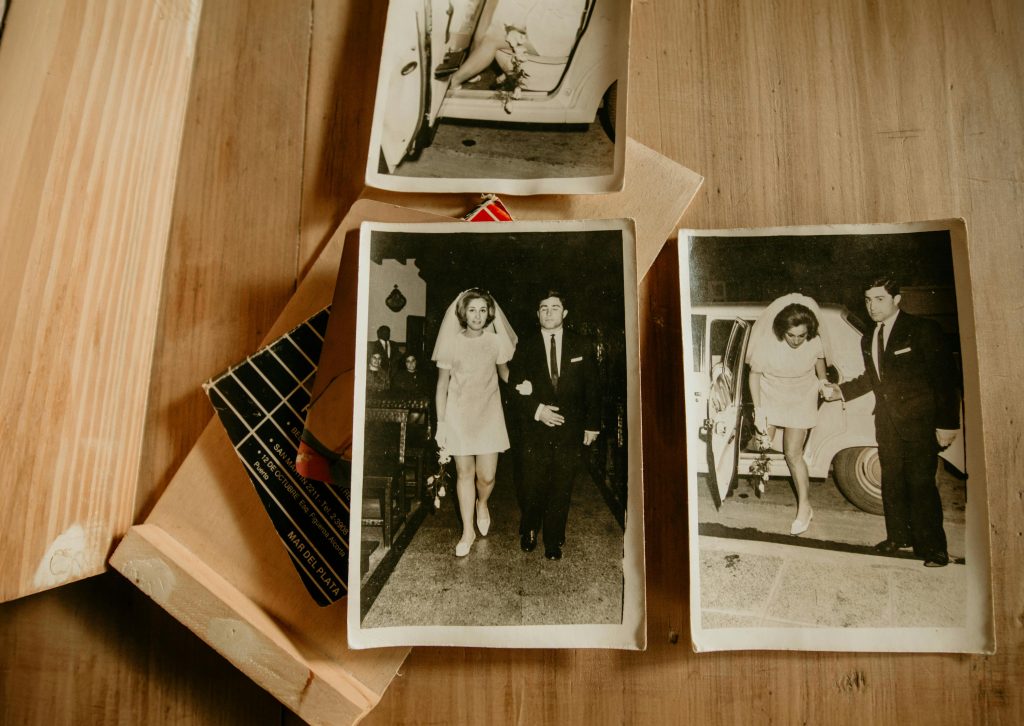
When paired with a story, photos become anchors, grounding the narrative in a tangible reality.
For example, a photo of a great-grandmother on her wedding day can be paired with the story of how she met her spouse, providing both visual and emotional context. Such combinations bring characters to life and invite readers to step into their world.
Even the smallest details in a photo—such as the furniture in the background, the style of clothing, or a facial expression—can inspire questions and discoveries that enrich the storytelling process.
Choosing the Right Photos
Not all photos are created equal when it comes to storytelling. While every image has value, some are better suited for a family history book than others. Thoughtfully selecting photos ensures they enhance your narrative rather than overwhelm or distract from it. A well-chosen photograph can transport readers to another time, offering a window into the past that words alone may not capture. Here are some key criteria to consider when curating images for your family history project:
1. Have Historical Significance
Photos that mark important milestones help anchor your story in time and give context to significant life events. Look for images that document:
- Weddings, engagements, or anniversaries
- Births, christenings, or first birthdays
- Family reunions or large gatherings
- Military service, graduations, or career achievements
These images serve as historical markers, helping to illustrate the major events that shaped your family’s journey. Pairing them with stories or written records can provide a fuller picture of the moment’s significance.
2. Highlight Everyday Life
While milestone photos are important, images of daily life can be just as compelling—sometimes even more so. Candid moments offer an intimate glimpse into how your ancestors lived, worked, and played. Consider including:
- A grandmother baking in the kitchen, apron dusted with flour
- Siblings playing in the yard, their laughter almost audible through the image
- A father repairing an old car while a child watches in fascination
- A mother sewing by lamplight, surrounded by fabric scraps

These snapshots of ordinary life give personality to your ancestors and make their experiences feel relatable, helping future generations connect with them on a deeper level.
3. Tell a Story on Their Own
Some photos don’t need captions to intrigue the viewer—they naturally spark curiosity and invite storytelling. Look for images that contain visual clues about the past, such as:
- Clothing styles that indicate a specific time period
- Background elements like vintage cars, home interiors, or storefronts
- Handwritten notes or captions on the back of the photograph
- Group photos that hint at relationships, social circles, or community gatherings
If an image raises questions—Who are they looking at? What was happening just before or after this moment?—it may be a strong candidate for inclusion, as it encourages deeper exploration.
4. Showcase Relationships and Emotions
Some of the most powerful images capture the connections between family members. Photos that depict warmth, affection, or shared moments bring your history to life in a deeply personal way. Examples include:
- A father teaching his son to fish
- Siblings holding hands or laughing together
- A couple stealing a glance at each other on their wedding day
- Grandparents surrounded by their grandchildren, beaming with pride
These images add emotional depth to your family history book, reminding readers that their ancestors weren’t just names in a genealogy chart—they were real people with love, struggles, and triumphs.
5. Consult Family Members for Hidden Context
Even if a photo seems straightforward, family members may recall details that add rich layers to the story. When selecting images, consider:
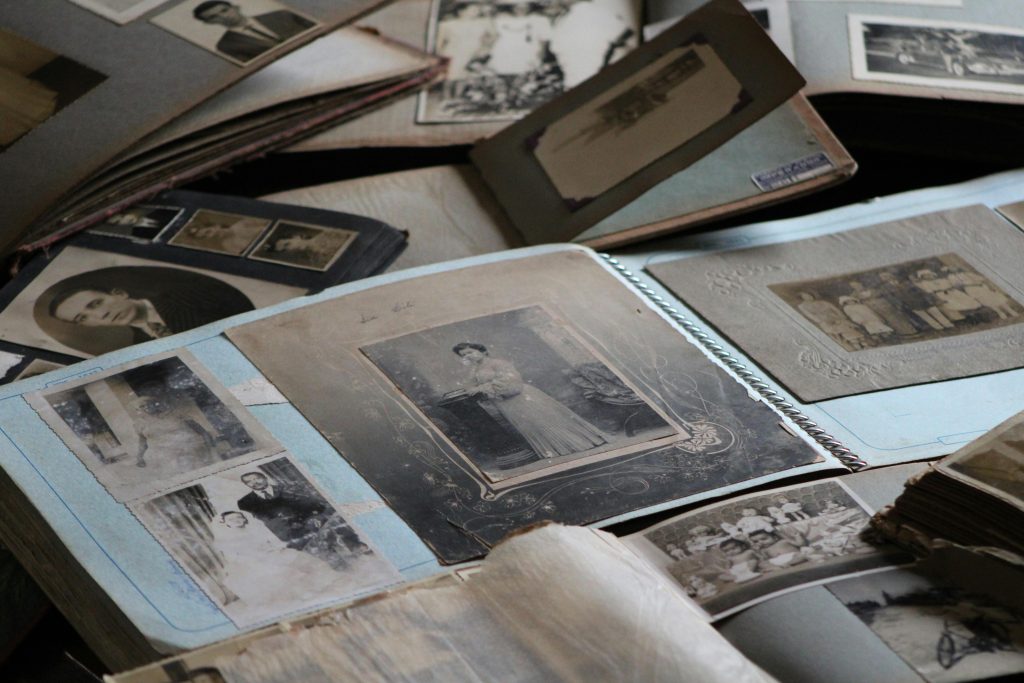
- Asking older relatives for memories associated with specific photos
- Investigating any written notes or names on the back of an image
- Comparing details from multiple sources to piece together a fuller picture
Sometimes, a simple image of a Sunday picnic could reveal stories of a beloved family tradition or a long-forgotten location.
Writing Narratives that Complement Photos
A photo without context is like a book without a title. The written narrative breathes life into an image, transforming it from a static moment into a story.
When crafting narratives to accompany your family history photos, consider weaving in rich details that transform a simple image into a vivid, immersive experience. Here are key elements to include:
1. Background Information: Setting the Stage
Before diving into the deeper story, provide essential context so readers can understand who and what they’re looking at. Be sure to identify:
- The People – List the names of those in the photo and their relationship to the family. If some individuals are unidentified, note that as well—this could encourage future relatives to help solve the mystery.
- The Date and Location – Even if you don’t have exact details, an estimated timeframe or general location can help situate the image in history.
- The Occasion or Circumstances – Was this a special event, a casual moment, or something in between? Describing what was happening at the time helps add depth to the photo.
For example, rather than just stating, “This is a photo of Grandma Mary in 1935,” you might write:
“This was taken in the summer of 1935 in front of the family’s farmhouse in Georgia. Grandma Mary, then 18, had just finished harvesting vegetables for dinner, a daily chore she shared with her siblings.”
2. Personal Insights: The Stories That Bring Photos to Life
Every family photo has a backstory, and the most captivating ones often come from personal anecdotes, quotes, or even folklore passed down through generations. Consider including:
- Family Stories – Share any well-known family tales tied to the image.
- Quotes or Sayings – If relatives remember something the people in the photo used to say, include it to capture their personality.
- Humorous or Heartwarming Moments – Lighthearted details make the narrative more engaging and personal.
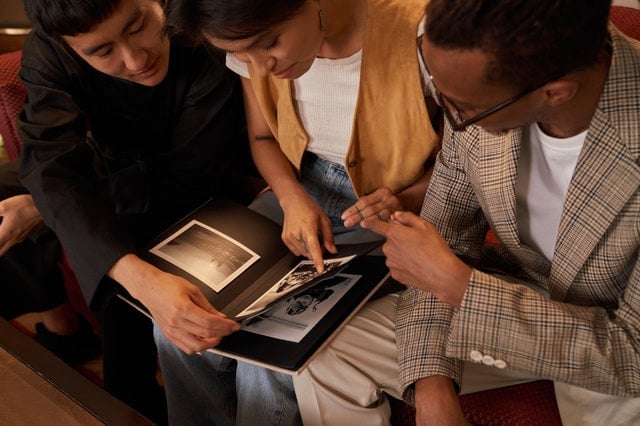
For instance, if there’s a photo of a great-uncle in his army uniform, you might include a family story about how he jokingly wrote letters home claiming to have become the best cook in the barracks—despite never having cooked a meal in his life.
3. Connection to Broader Themes: Placing the Image in Historical Context
A photo gains even more meaning when placed within the larger framework of history and culture. Look for ways to connect the image to:
- Historical Events – Was this taken during the Great Depression, World War II, or another significant time period?
- Cultural Traditions – Did this photo capture a wedding custom, holiday celebration, or other meaningful tradition?
- Family Migration and Ancestry – Does this image reflect a turning point in your family’s journey, such as immigration, a career change, or a major move?
For example, a photo of a relative arriving in America by ship could be paired with historical details about immigration during that time. If a photo shows a family gathering around a table during a holiday, you could explain how that tradition has evolved over generations.
4. Sensory Details: Bringing the Moment to Life
Help the reader step into the scene by incorporating sensory details that make the past feel tangible. Describe:
- What the setting smelled like – The aroma of fresh bread baking in the kitchen or the scent of pine trees at a family cabin.
- What could be heard – Laughter ringing through a crowded reunion, the crackle of an old radio playing big-band music.
- What it felt like to be there – The heat of the sun on a summer afternoon, the scratchy texture of woolen coats in a winter portrait.
For example, instead of saying, “This was a family picnic,” you might write:
“The air was filled with the scent of charcoal as Grandpa grilled burgers over an open flame. The children ran barefoot through the grass, shrieking with laughter, while Aunt June hummed an old gospel tune as she set the table with checkered cloths.”
By thoughtfully incorporating these elements—background details, personal insights, historical context, and sensory descriptions—you transform family photos from simple snapshots into vivid narratives that capture the essence of your ancestors’ lives. This approach not only preserves family history but also makes it engaging and relatable for future generations.
Creating Visual Storylines
The way photos are arranged in your family history book can significantly enhance its readability and emotional impact.
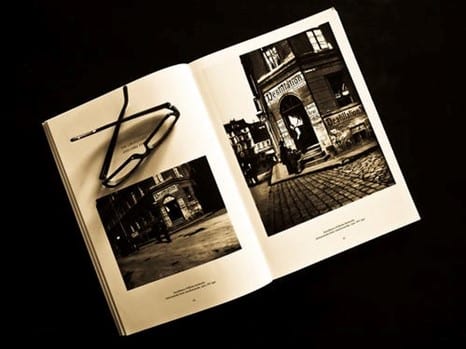
A well-structured visual storyline allows readers to follow the journey of your ancestors in a way that feels natural and immersive.
Thoughtful organization not only makes the book aesthetically pleasing but also strengthens the connection between images and narratives.
Consider these organizational methods:
1. Chronological Order: Building a Visual Timeline
Arranging photos from oldest to newest creates a clear, linear progression of your family’s evolution. This method works especially well for:
- Tracing generational changes – See how family traits, traditions, and lifestyles have evolved over time.
- Highlighting key historical moments – Mark significant life events such as births, marriages, and major relocations.
- Following a family’s migration story – Show how your ancestors moved from one place to another, capturing transitions through images.
For example, a chronological layout could begin with sepia-toned photos of 19th-century ancestors and gradually transition into color images of modern-day relatives, showing the passage of time.
2. Thematic Groupings: Organizing by Life Events and Traditions
If a strictly chronological approach feels too rigid, consider arranging photos by themes, allowing readers to explore different aspects of family life. Some common themes include:
- Celebrations and Holidays – Birthdays, weddings, graduations, and holiday gatherings.
- Work and Occupations – Family businesses, farming, military service, or notable careers.
- Home and Daily Life – Cooking, gardening, or casual family moments.
- Travel and Migration – Documenting journeys, vacations, or moves to new locations.
This method is especially useful when certain themes run deep within your family’s history, such as a long line of educators, military service members, or musicians.
3. Character-Focused Layouts: Honoring Individual Stories
Dedicate sections to individual family members or key ancestors, showcasing their personal journeys through a collection of images and stories. This approach works well for:
- Highlighting family matriarchs and patriarchs – Documenting their influence and legacy.
- Showcasing siblings or close relatives – Exploring their shared experiences through childhood, adulthood, and old age.
- Following one person’s life from childhood to later years – Capturing their growth and milestones over time.

For example, a chapter dedicated to a great-grandfather might begin with childhood portraits, followed by photos of his wedding, career, and later years with grandchildren.
4. Pairing Photos with Well-Crafted Stories
No matter which organizational method you choose, pairing each image or set of images with a well-written story enhances its impact. Ensure the layout allows for:
- Seamless transitions between text and imagery – So readers can easily move between storytelling and visuals.
- Captions that provide context – Brief but meaningful descriptions that highlight key details.
- Page designs that balance text and white space – To avoid overwhelming the reader with too much information at once.
By thoughtfully arranging photos and narratives, you create a cohesive, engaging family history book that not only preserves the past but also invites future generations to connect with their heritage.
Designing and Preserving Your Family History Book
A well-designed family history book does more than document the past—it brings memories to life and ensures they endure for future generations. Thoughtful design and proper photo preservation enhance both the visual appeal and historical integrity of your project.
Creating a Visually Engaging Book
The layout and design should make your book easy to navigate while enhancing the emotional impact of the stories inside. Consider these key elements:
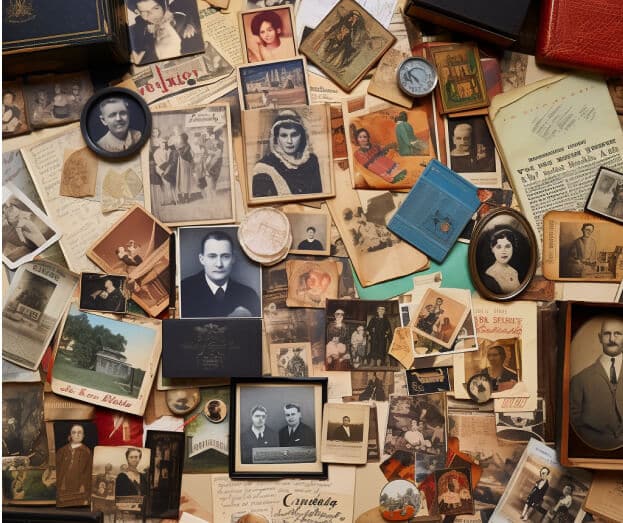
- Caption Every Photo – Provide names, dates, and locations, and include short anecdotes when possible. If details are unknown, invite family members to contribute.
- Balance Text and Images – Use white space strategically, vary page layouts, and avoid overcrowding to create a visually appealing reading experience.
- Enhance with Thoughtful Design Elements – Borders, background textures, and decorative fonts can add personality without overwhelming the content.
- Use High-Quality Scans – Ensure crisp, professional-looking images by scanning at 300–600 DPI and saving in TIFF or PNG format to preserve quality.
- Choose the Right Layout Software – Tools like Adobe InDesign, Canva, or Blurb BookWright help create a polished, print-ready book.
Preserving and Digitizing Old Photos
Old family photos are fragile, but with proper care, they can be preserved for generations. Key steps include:
- Restoring Damaged Photos – Use editing software like Photoshop or GIMP, or hire a professional for significant repairs.
- Labeling for Future Generations – Add names, dates, and locations using archival-safe pens for physical photos and metadata for digital copies.
- Organizing by Theme or Timeline – Sort photos chronologically or by theme (e.g., weddings, military service) to align with your book’s structure.
- Protecting Physical Originals – Store in acid-free albums, avoid exposure to light, heat, and humidity, and handle with cotton gloves to prevent deterioration.
- Digitizing for Longevity – Scan at high resolution, store copies in multiple locations, and use cloud storage or archival services to safeguard against loss.
By combining thoughtful design with careful preservation, you can create a visually compelling and deeply personal keepsake that will be cherished for generations.
For more tips on digitizing old photos, check out this blog.
Inviting Contributions
Family history is more than just names and dates—it’s the stories, traditions, and experiences passed down through generations. While you may be leading the effort in compiling your family’s history, involving relatives can provide a wealth of additional insights, making the project more comprehensive and meaningful. Here are some ways to invite contributions from family members:
1. Stories and Memories
Encourage relatives to share personal anecdotes and experiences that complement existing photos and records. Ask open-ended questions such as:
- What do you remember about growing up in Grandma’s house?
- Can you describe a favorite holiday or tradition from your childhood?
- Do you recall any family sayings or jokes that were passed down?
Sometimes, people need a little prompting to unlock memories. Consider bringing a few key photographs to a family gathering and asking, Who can tell me more about this day? These casual conversations can reveal rich details that might otherwise be lost.
2. Additional Photos & Documents
Many relatives may have photo albums, letters, or documents tucked away in attics or drawers. They might assume no one else is interested in them—until you ask.
- Organize a “photo scanning day” where family members bring their collections, and you digitize them for preservation.
- Set up a shared online folder where relatives can upload pictures and documents at their convenience.
- Encourage them to provide context by writing down who’s in the photo, where it was taken, and any related stories.

These photos and papers might unveil unexpected connections, such as a forgotten family business, a relative’s military service, or even clues about long-lost ancestors.
3. Fact-Checking Assistance
Older relatives can be invaluable in verifying names, dates, and locations, ensuring your history is as accurate as possible.
- Ask them to review family trees and timelines for errors or missing details.
- Compare multiple sources—different family members may have slightly different versions of the same story.
- Record conversations (with permission) so you can refer back to details later.
Be mindful that memories can sometimes be fuzzy, and discrepancies may arise. Treat differing accounts as an opportunity to explore multiple perspectives rather than a roadblock.
4. Hosting a Family Gathering or Virtual Meeting
Bringing the family together—whether in person or virtually—can be a powerful way to spark conversations and unearth new stories.
- Host a “Memory Night” where everyone shares their favorite family story.
- Plan a themed gathering, such as “Grandpa’s Era,” where you focus on the time period he grew up in.
- For those who can’t attend in person, set up a Zoom or FaceTime call and encourage participation from relatives across the country (or even the world).
Engaging family members in this process not only enriches your historical research but also fosters deeper connections between generations. Even those who may not initially see the value in family history might become excited when they see their stories being preserved for future generations.
Final Thoughts
A thoughtfully crafted family history book is more than a collection of photos and stories—it’s a bridge between generations.

By blending visuals with meaningful narratives, you create a lasting legacy that preserves your family’s history, values, and traditions.
With careful curation and design, your book will become a cherished keepsake, ensuring that the past remains alive and inspiring for future generations.































